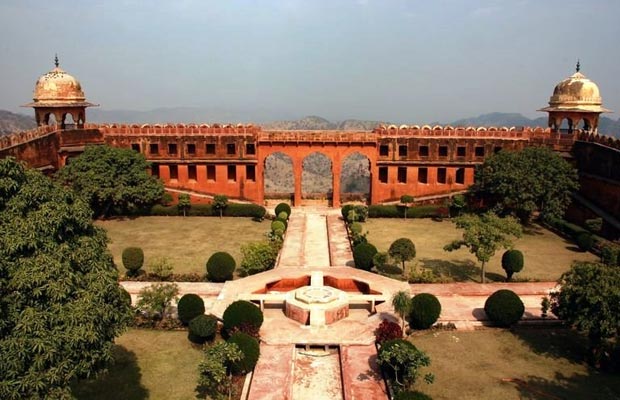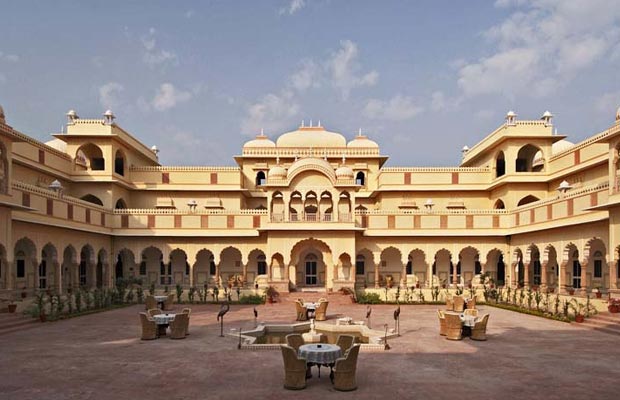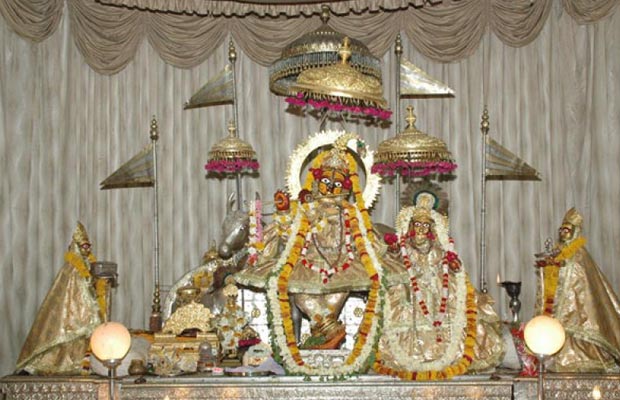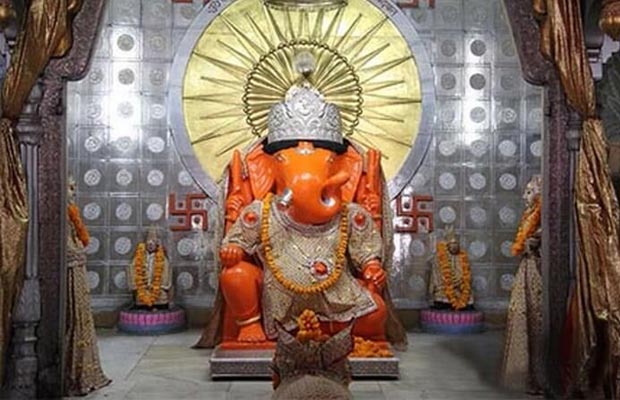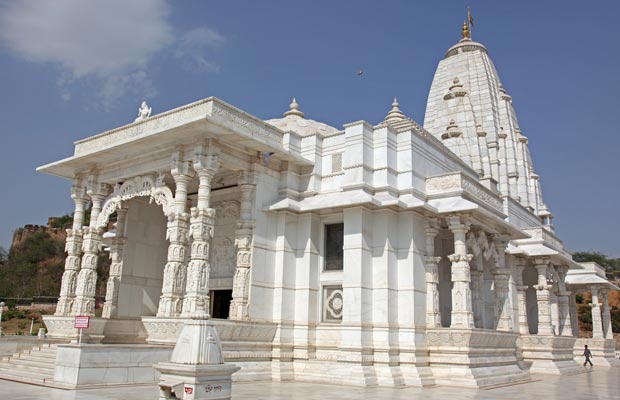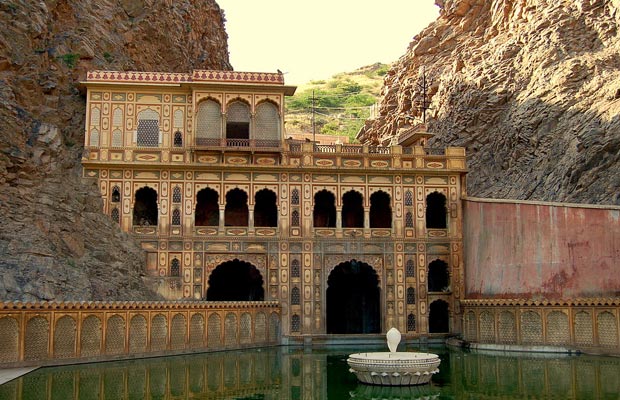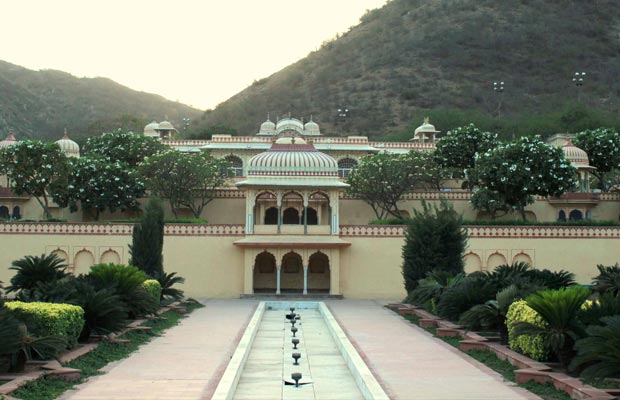Jaipur Sightseeing Cab Tour - Package 1
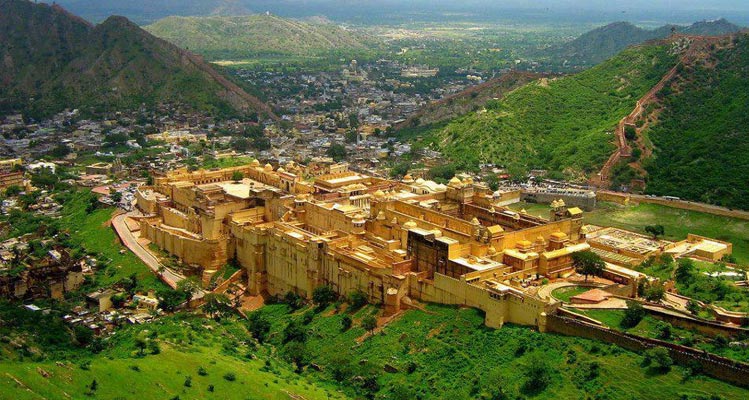
Jaipur is the largest city in Rajasthan and was built in the 11th century by Sawai Jai Singh as India's first planned city. Jaipur is a major tourist attraction amongst Indian as well as international travellers. It belongs to the tourist Golden Triangle of Delhi, Jaipur and Agra. It hosts several attractions like the City Palace, Jantar Mantar Observatory, Govind Dev ji Temple, Birla Temple, several massive Rajput forts and so on.
Hawa Mahal
Hawa Mahal (Palace of Breeze). Built in 1799 by Maharaja Sawai Singh as part of City Palace. It was an extension of the Zenana (women) chamber. It's purpose was to allow royal ladies to observe everyday life in the street below without being seen. It is a five storey high red sandstone structure complete with over 950 windows. The breeze (or hawa in Hindi) circulates through these windows giving the palace its name.
City Palace
City Palace, (Inside the old city, close to New Gate and Hawa Mahal). An imposing blend of traditional Rajput and Mughal architecture. It is a vast palace complex occupying nearly one-seventh of the Pink City. It was originally built by Maharaja Jai Singh II. The complex is divided into a series of courtyards, sprawling gardens and buildings. It is home to several palatial structures like the Chandra Mahal, (home to present Maharajah of Jaipur), Mubarak Mahal (housing a textile museum), Diwan-e-Khas (or Hall of Private audience housing the two largest silver vessels in the world, which are duly mentioned in the Guinness book), the Diwan-e-Aam ( or Hall of Public Audience) and the gateway Ridhi Sidhi Pol (with four small doorways decorated with motifs depicting the four seasons).
Jantar Mantar
Jantar Mantar, (very close to the City Palace.), 9:00 a.m-4:30 p.m. This UNESCO world heritage site is the largest of five astronomical observatories build by Maharaja Jai Singh during the period 1727-1734 in north India. The observatory consists of fourteen major geometric devices (or yantras in Hindi) for measuring time, predicting eclipses, tracking stars in their orbits, ascertaining the declinations of planets and determining the celestial altitudes etc. There is signage providing elaborate explanations for the use of each device, and guides can be hired to provide much the same information in a more digestible format. The audio guide at the observatory isn't great and doesn't tell you very much more information than the already existant signage.
Jal Mahal
Jal Mahal (Water Palace), (On the way to Sisodia Rani Garden). A Rajput style architectured palace sits in the center of the Maan-sarovar lake. The lake is often dry in the winter, but summer monsoons frequently turn it into a beautiful lake filled with water hyacinths.
Amber Fort
Amber Fort, (11 km North of central Jaipur), 08:00-17:30. This massive fort-palace complex built in hybrid Hindu-Muslim style dates back to Raja Man Singh and was the royal palace of the Kachwahas from c. 1600-1727. The name has nothing to do with the rather pretty pastel yellow colour; instead, the fort is named after the town of Amber, in turn named after the goddess Amba. The main sights within the fort include the Sheesh Mahal, adorned with thousands on thousands of mirror tiles on the walls and ceiling. The fort/palace grounds are sprawling and the information panels (hindi/english) are somewhat limited, so it might be worth getting an audio guide or a real guide. The real guide will cost about Rs 70-100 and will also take you to the Rajasthan Kala Mandir (a government operated shop) to buy souvenirs. The guide gets a 2% commission on the items you buy. Also see the Amber Light Show below. It's a bit of a hike up to the fort from the town, but resist the temptation to take an elephant ride to the top. Elephant rides are cruel to the animals and they are often treated very poorly by their keepers, so it's best not to encourage the practice.
Albert Hall Museum
The Albert Hall Museum is a museum in Jaipur in Rajasthan, India. It is the oldest museum of the state and functions as the State museum of Rajasthan. The building is situated in Ram Niwas Garden outside the city wall opposite New gate and is a fine example of Indo-Saracenic architecture. The building was designed by Sir Samuel Swinton Jacob, assisted by Mir Tujumool Hoosein, and was opened as public museum in 1887. It is also called the Government Central Museum.

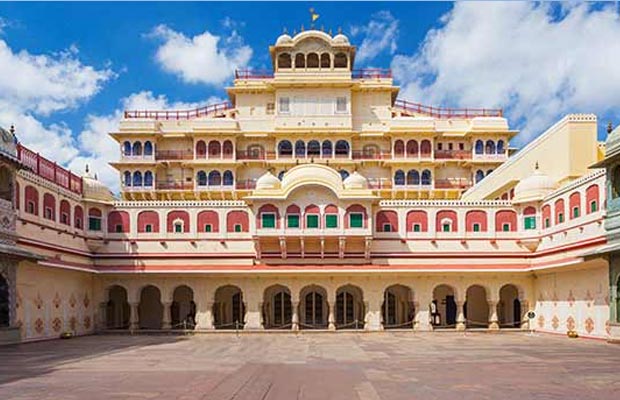
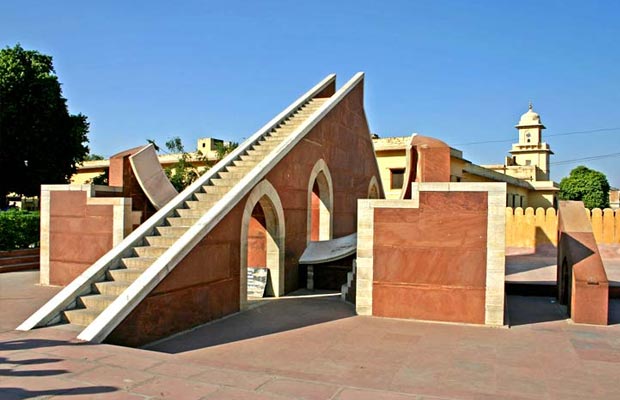
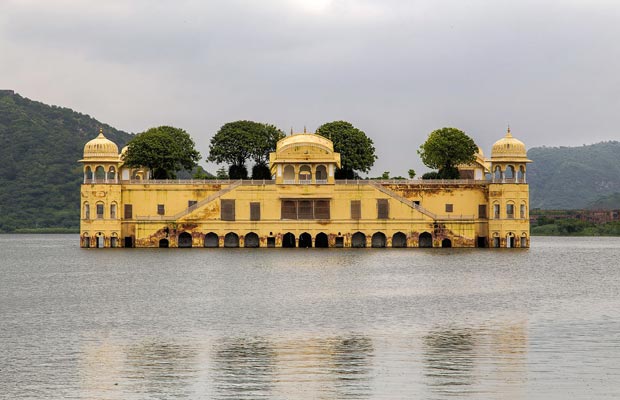
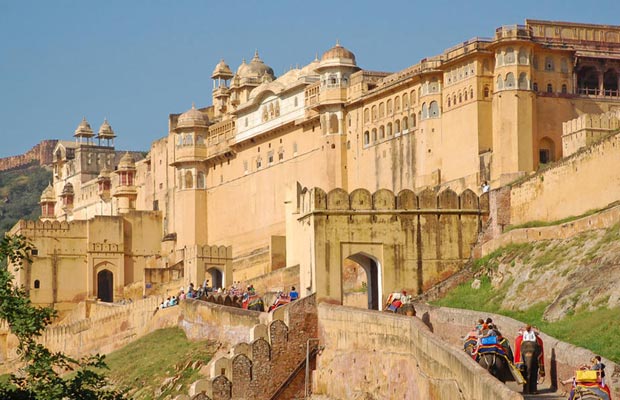

Jaipur Sightseeing Cab Tour - Package 2
Jaigarh Fort
Never conquered in battle, this was considered the strongest of the three forts in the area. It is best known as the site of the world's largest cannon, the Jaivana, which was test-fired only once — according to legend, despite using only the half the design amount of gunpowder, the cannonball flew 35 km! A better reason to visit the fort, though, are the scenic gardens at the other end and the spectacular views over the Amber Fort and the hills around. The remains of the foundry where the Jaivana (and many more) were cast are also in the fort grounds.
Nahargarh Fort
The smallest of the three forts, notable primarily for excellent views over Man Sagar lake and the vast sprawl of Jaipur. The fort also houses the (relatively) compact Madhavendra Bhawan palace, although its former splendour is fading fast under a new layer of graffiti and pigeon droppings. Portions of the movie Rang De Basanti were shot at this fort. To go the area where the "Pathshala" song was shot, take a left turn as soon as you enter the fort.
Govind Devji Temple
For Vaishnavites, particularly followers of Lord Krishna, this is the most important temple in the world after Vrindavan. Lord Krishna presiding in the temple were brought to Jaipur from Vrindavan during Mughal rein. According to popular legend, Lord Krishna's idol in the temple looks exactly like Krishna's form while his incarnation of Earth. It is located at Jainiwas Gardens, Jalebi Chowk, in the same campus as City Palace.
Moti Doongri temple
Moti Doongri temple is located in the center of Jaipur city. This Temple is the main center of religion for Jaipur people. Moti Dungri is basically a small hill, which means Pearl Hill. There is a Temple and a Palace on this hill. Moti Dungri temple is dedicated to Lord Ganesha and it is said that at the time of building this city, this temple was constructed first to protect the city
Lakshmi Narayan Temple
Lakshmi Narayan Temple (aka The Marble Temple) (Birla Temple), (below the well known Moti Dungri fort). is a relatively new temple made of white marble with beautiful carvings. It covers a vast area in Jaipur city and is built in a contemporary manner. Birla Temple is completely constructed with finest high quality white marbles.
Galtaji
Galtaji is an ancient Hindu pilgrimage site situated 10 km from Jaipur on Jaipur-Agra highway near Sisodia Rani Garden. The main temple here is temple of Galtaji in constructed in pink stone. The temple has a number of pavilions with rounded roofs, exquisitely carved pillars and painted walls. The temple is surrounded by natural springs and reservoirs that are considered holy. There are also seven tanks or kunds here.
Sisodia Rani Garden and Palace
Sisodia Rani Garden and Palace is a palace garden 6 kilometres from Jaipur city. It was built by Maharaja Sawai Jai Singh II in 1728. The place consists of tiered multi-level gardens with fountains, watercourses and painted pavilions. A double-storeyed palace occupies the top terrace of the garden. The palace has many galleries, pavilions and beautiful murals depicting scenes from the life of lord Krishna.
The palace garden derives its name, Sisodia Rani Garden and Palace, from the rani (queen) for whom it was built. She hailed from the Sisodia line of Suryavanshi (Sun dynasty) Rajputs, who ruled and now nominally rule the region of Mewar in Rajasthan.
